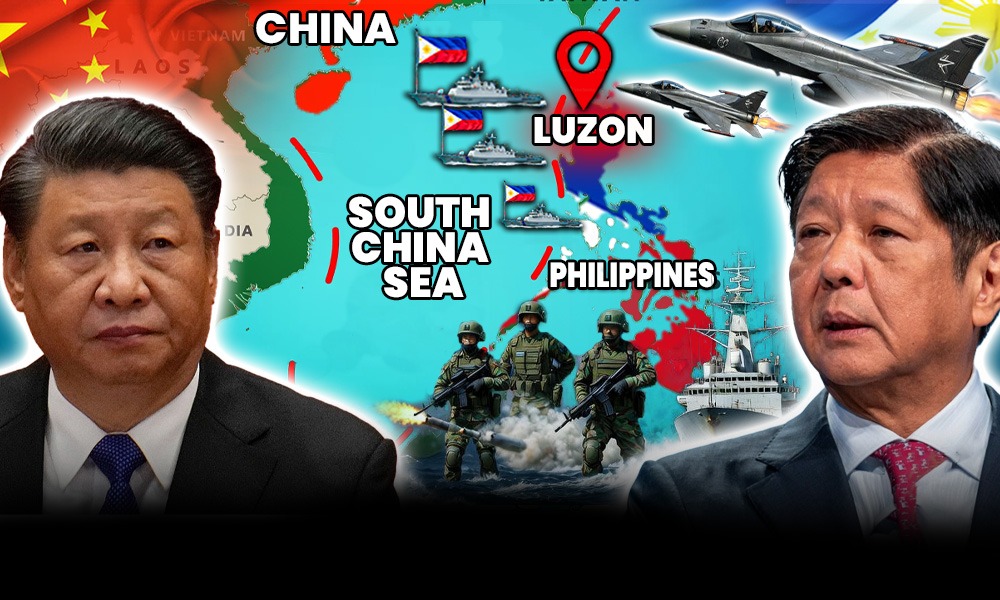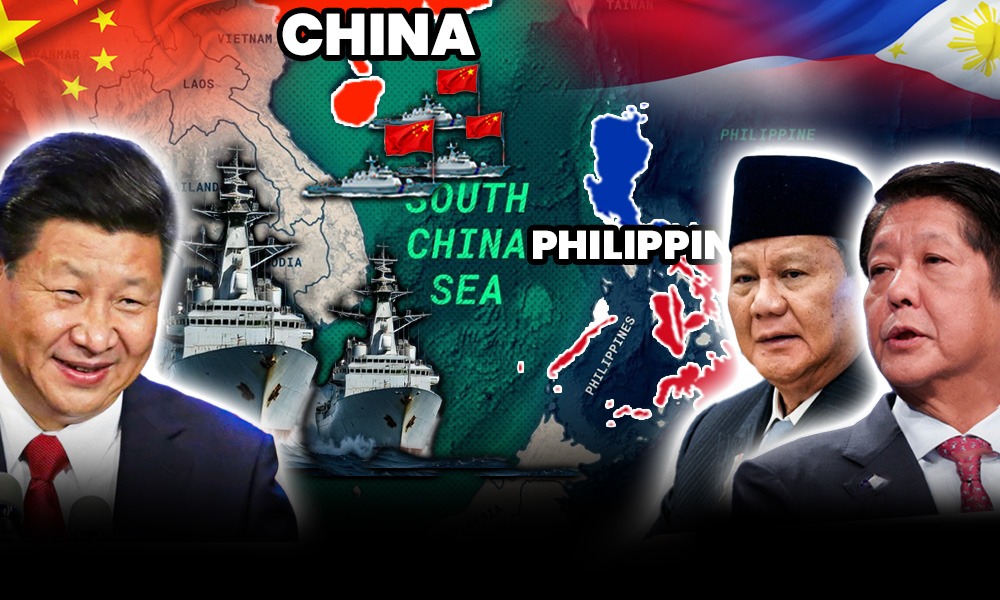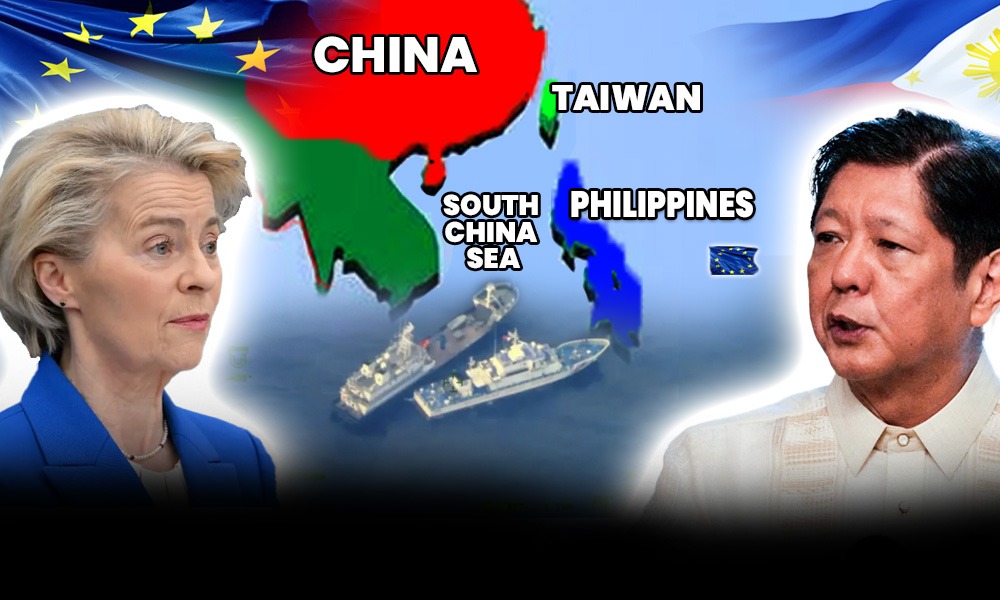Philippine Military to Hold Anti-invasion Drills in Northern Luzon, South China Sea
What does it mean for a small archipelago to prepare for a great-power conflict? The Armed Forces of the Philippines (AFP) is asking itself that very question as it steps into a new era of deterrence and readiness. Once focused almost entirely on fighting insurgents in the jungles and mountains, the AFP is now retooling to defend the nation’s 7,000 islands from threats beyond its shores. This transformation is being driven by the Comprehensive Archipelagic Defense Concept (CADC), , a bold strategy that stretches the Philippines’ defensive reach beyond its coastlines and into its vast Exclusive Economic Zone (EEZ). It’s a recognition that modern threats come not just from within, but from the sea, the air, and even the gray areas in between.
Under the Horizon 3 modernization program (2023–2028), this shift is becoming tangible. The AFP is investing in new radar systems, missile batteries, and joint military exercises that prepare soldiers, sailors, and pilots to fight as one cohesive force. “We must be able to hold out for at least 20 to 30 days,” declared General Romeo Brawner Jr., capturing a new doctrine of endurance, one that measures strength not only in weapons, but in resilience. This doctrine of self-reliant defense marks a historic break from the past, where internal rebellion was the focus, and points instead to a future where external deterrence defines survival.
The reason for this transformation is as clear as it is urgent. Across the South China Sea, China’s aggressive behavior has reached unprecedented levels, from collisions and ramming incidents near Scarborough Shoal to violent water cannon attacks on resupply missions at the BRP Sierra Madre in the Second Thomas Shoal. Each encounter exposes Beijing’s use of “gray-zone tactics” calculated acts of coercion that stop short of war but chip away at sovereignty. Meanwhile, surveillance and militia fleets flood Philippine waters, turning once-quiet fishing grounds into militarized flashpoints. These provocations have left Manila with little illusion: deterrence is now a necessity, not a choice.
Philippine Marines Get Powerful BrahMos Missiles to Counter CHINA’s Aggression
That’s why the AFP’s anti-invasion drills in Northern Luzon and the South China Sea have taken on such symbolic weight. The exercises are not just rehearsals; they are messages in motion, signals of a nation determined to stand its ground. Northern Luzon, lying just across the Luzon Strait from Taiwan, has become the Philippines’ forward defense frontier. In a striking directive, General Brawner ordered his commanders to “start planning for actions in case there is an invasion of Taiwan.” The statement was more than military planning, it was an acknowledgment that the Philippines’ fate is now intertwined with regional stability.
In this tightening Indo-Pacific chessboard, the Philippines finds itself at a crossroads of geography and geopolitics. As the frontline democracy on the Pacific’s western edge, it faces a defining question: can an island nation, long underestimated, transform itself into a credible deterrent power? The answer, written in the skies above Luzon and the waves of the South China Sea, may determine not only the future of Philippine security, but also the balance of peace in Asia’s most volatile waters.
Details and Execution of the Anti-Invasion Drills
The Armed Forces of the Philippines (AFP) has launched one of its most ambitious readiness operations to date, the AFP Joint Exercise (AJEX) DAGIT-PA 09-2025, an acronym for Dagat, Langit, at Lupa (“Sea, Air, and Land”). This large-scale multi-domain drill shows a decisive evolution in the country’s defense strategy, marking a shift from decades of internal counter-insurgency toward a posture centered on territorial and external defense. Over 2,000 personnel from the Army, Navy, Air Force, and Marine Corps, along with units from the Philippine National Police and Coast Guard, have converged for this ten-day exercise to test coordination across land, air, and maritime domains. The operations simulate a large-scale anti-invasion scenario, including amphibious landings, air interdictions, counter-landing operations, and joint coastal defenses—reflecting the operational application of the Comprehensive Archipelagic Defense Concept (CADC). Significantly, the drills were briefly suspended in Northern Luzon due to Super Typhoon Uwan, an interruption that reinforced the AFP’s dual role in both national defense and humanitarian response (HADR). It served as a vivid reminder that in the Philippines, the capacity to defend the nation must coexist with the capacity to save it during climate disasters.
The geography of the training exercises is as symbolic as it is strategic. In Northern Luzon, troops practiced counter-landing operations to simulate the recapture of key coastal infrastructure, such as ports and airfields, in Laoag City, situated near the Luzon Strait, a maritime corridor of immense strategic importance located just 350 kilometers from Taiwan. Here, the recently redeployed 4th Marine Brigade from Mindanao took center stage, conducting anti-armor ambushes and coastal defense drills that signal the AFP’s pivot toward conventional deterrence. Meanwhile, in the South China Sea, operations focused on maritime sovereignty protection and interdiction tactics. On Thitu Island (Pag-asa Island), the largest Philippine-held feature in the Spratly Islands, forces conducted joint amphibious and defensive operations, capitalizing on recent upgrades to the island’s airstrip and port facilities. This dual-theater setup, Northern Luzon and the West Philippine Sea, shows the Philippines’ intent to defend both its northern flank, linked to potential Taiwan contingencies, and its western frontier, where China continues to assert expansive claims.
Philippines Teams Up With East Timor Against China in the South China Sea
Integral to these exercises is the deepening integration with allied forces, especially lessons derived from Balikatan 2024, the 39th iteration of the annual US-Philippine military exercises. That event marked several historical milestones, including the first deployment of the US Army’s Mid-Range Capability (MRC) missile system, capable of striking targets up to 1,800 kilometers away, to Northern Luzon. It also saw the Philippine Navy’s first-ever anti-ship missile launch and the Philippine Air Force’s inaugural operational test of surface-to-air missiles, showcasing Manila’s expanding capacity to defend and strike across domains. The 2025 AJEX DAGIT-PA drills build directly on these achievements, reinforcing joint command, control, and communication protocols (C4ISR) and enhancing interoperability across the AFP’s service branches and with allied forces.
Ultimately, the anti-invasion drills are far more than routine exercises, they are strategic declarations. Every simulated amphibious landing, coordinated air sortie, and maritime patrol represents not only tactical training but also a political signal of intent: that the Philippines is determined to defend its archipelago, uphold its sovereignty, and stand with allies in the face of regional instability. Through these exercises, the AFP demonstrates a new kind of readiness, one that blends deterrence with resilience, asserting that while the Philippines may not seek conflict, it is fully prepared to endure and resist should one arise.
Strategic Implications and Challenges
The AFP’s anti-invasion drills and archipelagic defense posture are more than tactical exercises, they are a manifestation of the Philippines’ strategic transformation within a rapidly shifting Indo-Pacific order. Each maneuver, deployment, and simulation reflects not only the country’s growing defense ambitions but also the complex balancing act it faces between strengthening alliances, addressing internal military gaps, and confronting external threats through transparency and resilience.
The most immediate impact of these drills lies in the reinforcement of the US-Philippine Mutual Defense Treaty (MDT), signed in 1951 and revitalized through modern frameworks such as the Enhanced Defense Cooperation Agreement (EDCA). The 2025 exercises highlight how EDCA sites, strategically distributed across Northern and Western Luzon, have evolved into forward staging points for logistics, humanitarian response, and rapid deployment operations. These include locations in Cagayan, Isabela, and Palawan, all geographically positioned to monitor and, if necessary, respond to flashpoints in the South China Sea and the Luzon Strait. Such integration ensures that in the event of a regional conflict, the Philippines can serve as both a frontline defense hub and a logistical bridge for allied forces.
Beyond alliance management, these exercises send a potent deterrence signal to Beijing. Manila’s assertive military posture, anchored in joint drills, transparency campaigns, and the public framing of Chinese coercion, is a deliberate counter-narrative to China’s “gray zone” and “lawfare” tactics, which seek to erode sovereignty incrementally without direct warfare. By aligning its national defense posture with international law and alliance-based deterrence, the Philippines is demonstrating that it will no longer rely solely on diplomatic protest or reactive measures. Instead, it is now projecting preparedness and strategic intent, positioning itself as both a regional security stakeholder and a defender of the rules-based order.
Philippines $1.9B Hanwha Submarine Deal With South Korea to Deter China in SCS
However, this assertive posture exists against the backdrop of persistent structural challenges, foremost among them, underinvestment in defense. According to SIPRI’s 2024 report, Philippine military expenditure reached $6.12 billion, equivalent to 1.3% of GDP, one of the lowest defense-to-GDP ratios among regional peers. This figure lags significantly behind the 2.0% NATO benchmark widely recognized as the minimum threshold for credible deterrence. While the Department of National Defense (DND) has proposed a ₱258.2 billion budget for 2025, a 6.5% increase from the previous year, experts caution that much of this allocation remains directed toward internal security operations rather than the external defense assets needed to modernize naval, air, and missile capabilities.
The result is a strategic imbalance: the Philippines is undertaking a more forward-looking defense doctrine, but its hardware and budgetary infrastructure are still catching up. This mismatch limits the military’s ability to sustain high-tempo external operations, such as prolonged maritime patrols or large-scale defense engagements. Analysts from the Institute for Strategic and Development Studies (ISDS) have argued that unless defense spending is structurally reallocated toward maritime surveillance, cyber defense, and force projection, the AFP risks remaining tactically ambitious but materially constrained.
The Philippines’ “Measured Transparency” Strategy
In contrast to its resource limitations, the Philippines has found strategic strength in information warfare and public diplomacy, what defense officials term “measured transparency.” This approach involves deliberately publicizing Chinese incursions through high-definition videos, photographs, and situational briefings, a stark departure from the secrecy of past administrations. One of the most notable examples occurred in August 2025, when the Philippine Coast Guard (PCG) released video footage of a collision between a Chinese Coast Guard cutter and a Philippine patrol vessel near Scarborough Shoal. The footage went viral across international media outlets, prompting diplomatic statements of concern from the United States, Japan, and the European Union, and forcing Beijing to respond publicly.
This transparency-driven deterrence serves multiple strategic functions. Domestically, it reinforces public support for the government’s defense modernization and alliance initiatives. Internationally, it mobilizes sympathy and solidarity by framing the Philippines as a smaller power standing up to unlawful coercion, a moral high ground that China struggles to counter. Analysts from the Asia Maritime Transparency Initiative (AMTI) have described this approach as a “non-kinetic countermeasure” that converts China’s covert intimidation tactics into diplomatic liabilities. By transforming every gray-zone incident into a public case study of aggression, Manila is reshaping the information environment, compelling China to operate under the watchful eye of global scrutiny.
In sum, while the AFP’s anti-invasion drills mark a significant leap toward a credible defense posture, the Philippines faces an enduring triad of challenges: aligning its limited defense budget with ambitious strategic goals, balancing external deterrence with internal resilience, and maintaining transparency without escalating tensions. Yet, these very constraints are forging a new kind of power, one built not solely on weapons, but on legitimacy, alliances, and resolve.
5 Challenges the Philippines Will Face as ASEAN Chair in 2026
Conclusion: Future Outlook and Areas for Development
As the Philippines continues to implement the Comprehensive Archipelagic Defense Concept (CADC), the challenge ahead lies not in intent, but in institutionalizing capability and sustainability. Exercises such as AJEX DAGIT-PA are critical not only for immediate readiness but also for embedding the archipelagic defense mindset across all branches of the Armed Forces of the Philippines (AFP). The constant rotation of forces, refinement of doctrines, and repetition of large-scale exercises will ensure that the CADC evolves from a conceptual framework into an operational reality. However, sustaining this strategic pivot requires long-term political will and consistent funding, particularly for Horizon 3 modernization projects (2023–2028). These include vital multi-domain assets, from coastal defense missile batteries and fighter aircraft to maritime patrol and surveillance systems, that will transform the AFP into a credible force capable of deterring aggression across sea, air, and land. Without such material investments, the country risks possessing the right strategy but lacking the means to execute it.
Equally vital to the Philippines’ evolving defense posture is the interoperability imperative. As regional threats become more complex and multidimensional, the ability of the AFP to operate seamlessly with allies, particularly the United States, Japan, and Australia, will determine the effectiveness of collective deterrence. Future exercises are expected to emphasize joint command and control operations (C2X), improving coordination in real-time maritime and aerial scenarios where milliseconds can define escalation or restraint. Beyond technology and tactics, this also demands a shared understanding of Rules of Engagement (ROE), especially in the gray-zone environment where Chinese incursions are often coercive yet non-violent. Clear, unified ROE with allies will prevent miscalculations and strengthen the credibility of a coordinated defense response.
Looking ahead, the Philippines’ transformation from an inward-looking force to a forward-leaning maritime power will depend on three enduring commitments: sustained modernization, institutional readiness, and allied integration. Each exercise, investment, and partnership forms a building block toward a resilient deterrence architecture in the Indo-Pacific, one that ensures the nation’s sovereignty, upholds regional stability, and preserves peace through strength.



